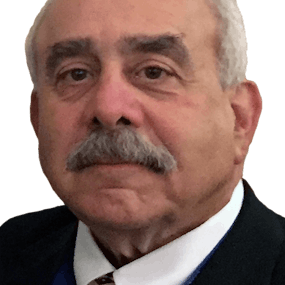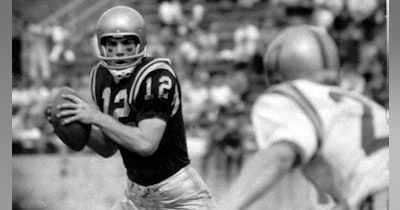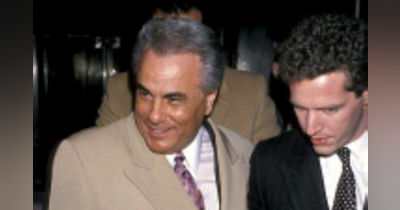Where does the “buck stop” for turning up the heat on armed and violent criminals?
Read this National Public Radio (NPR) broadcast reporting that: “The number of murders in the United States jumped by nearly 30% in 2020 compared to the previous year in the largest single-year increase ever recorded in the country, according to official FBI statistics released Monday. The data show 21,570 homicides in the U.S. in 2020, which is a staggering 4,901 more than in 2019. The tally makes clear — in concrete terms — just how violent last year was.” (You can find the link to the article down below)
I’ll leave the - Why is this happening? - question - to the pundits, academics, and speculators to ponder because there is another “why” question I would like to opine on.
That is: Why should we care?
According to Wikipedia: W. H. Auden was an Anglo-American poet. His work was noted for its stylistic and technical achievement, its engagement with politics, morals, love, and religion, and its variety in tone, form, and content.
On the subject of murder, Auden wrote that: “Murder is unique in that it abolishes the party it injures so that society has to take the place of the victim and on his [or her] behalf demand atonement or grant forgiveness; it is the one crime in which society has a direct interest.”
I believe that Auden was saying that it is incumbent upon a society – at least one that values human rights and peace – to step in and seek justice for the victims (and killers), resolution for the victim’s loved ones, and peace for the community at large.
While I believe that this is why we should care - caring is one thing - seeking justice, resolution, and peace is something else.
Thankfully, our society is one that is based on a code of laws intended to ensure that we preserve peace in a way that protects human rights.
Therefore, when one human being causes the death of another - a homicide - investigations are required in order to determine if the homicide was the result of the crime of murder, another crime, or something else.
Information is the life-blood of every investigation. Information that rises to the level of admissible evidence is what powers criminal prosecutions. Investigations that are evidence-led help target the right individuals with precision and impartiality.
When it comes to the crimes of murder in America today, the means or instruments that criminals are increasingly turning to are firearms. The recent NPR report, also noted that: “Much of the violence was driven by firearms, with nearly 77% of murders being committed with some sort of gun.”
Crimes involving the unlawful discharge of firearms must be investigated. Even seemingly insignificant crimes can reveal the key piece of information needed to solve a much more serious crime.
Every crime gun holds a story, and best practices and model policies abound in terms of the collection, analysis, and extraction of that “story”, which can then be disseminated to those who need it in order to advance their criminal investigations, disrupt the cycle of violence and stop armed criminals before they can do more harm.
In order to “turn up the heat” on armed criminals who have a penchant for violence and murder - law enforcers, forensic analysts, and prosecutors at all levels of government must be thinking and acting together to put sustainable policies and procedures in place to extract the entire story that each crime gun holds. And do it in a timely manner that best seeks justice for the victims and for the accused.
What do we need to do to turn up the heat on armed and violent criminals – and who resets the thermostat?
Shouldn’t we seek the “high-ground” - the national perspective - in order to see the big picture?
When considering the matter of today’s highly mobile criminals and gun traffickers who move between cities, states, and national borders, the big picture can best be viewed from the federal level but only when engaged - thinking and acting together - with state and local partners.
Two examples of data systems with a collaborative and national perspective are ATF’s eTrace System, to trace the history of the crime gun’s transactions, and the National Integrated Ballistic Information Network (NIBIN) to help investigators link crimes, guns, and suspects through fired ammunition components found at crime scenes and collected from recovered crime guns.
Consider for a moment that the U.S. Office of National Drug Control Policy (ONDCP), is where the responsibility for leadership in dealing with the nation’s illegal drug market is fixed.
It makes me wonder, if the unprecedented jump in the national murder rate, isn’t itself worthy of a discussion about where to centralize the responsibility for turning up the national heat on violence-prone, gun-toting criminals and those who arm them?
So where does the "buck stop" for putting across-the-board policies and resources in place to better seek justice, resolution, and peace? If it stops within each of the almost 25,000 cities and counties across the United States or even within each of the 50 states - does the "buck" really stop anywhere in terms of national reach and range?
Are there more effective ways to fix responsibility and leverage the broad scope of the federal government’s powers to do such things as appropriating needed funding, setting national policy, providing operational and national program support to the states and cities, force-multiplying investigative assets, and providing national criminal and forensic intelligence sharing tools? Do models for this already exist?
For example, the High-Intensity Drug Trafficking Area (HIDTA) program, a drug-prohibition enforcement program run by the ONDCP has been an effective way to extend all of these things to the “boots on the ground”- to manage in a way that meets their regional needs.
This writer is convinced, that we can only be successful at these tasks of seeking justice, resolution, and peace—and in building trust amongst the public we serve—with the leadership and support of policymakers and administrators who see the big picture with the help of the people closest to the problem at the state and local levels.
Notwithstanding - the questions remain - who will “reset the thermostat” turning up the heat on violent criminals and where and with whom should the “buck” stop?
https://www.npr.org/2021/09/27/1040904770/fbi-data-murder-increase-2020




